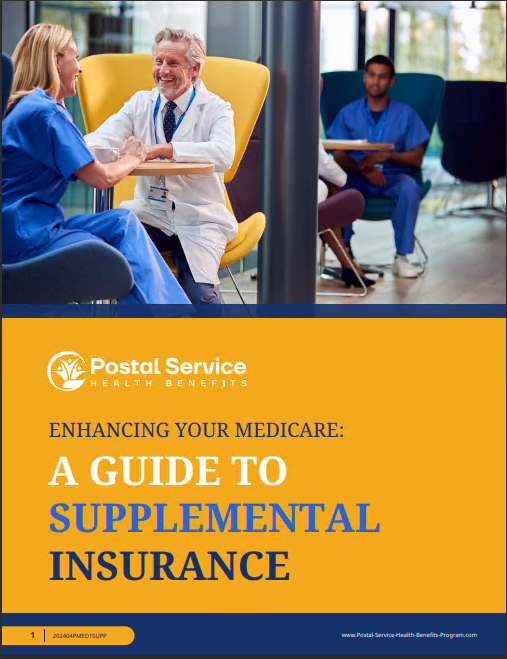Key Takeaways
- Postal workers should evaluate their unique healthcare needs, including family considerations and pre-existing conditions, when choosing a PSHB health plan for 2025.
- It is crucial to understand the different types of health plans available under the Postal Service Health Benefits (PSHB) program to make an informed decision.
Which Type of PSHB Health Plan Should Postal Workers Choose in 2025?
As 2025 approaches, postal workers will need to make an important decision regarding their health insurance coverage under the new Postal Service Health Benefits (PSHB) program. This shift from the Federal Employees Health Benefits (FEHB) program means postal workers must carefully evaluate their options to ensure they select a plan that best meets their needs. With different types of plans available, including Health Maintenance Organizations (HMOs), Preferred Provider Organizations (PPOs), and High Deductible Health Plans (HDHPs), understanding the nuances of each can help postal workers make an informed choice.
Understanding the Postal Service Health Benefits (PSHB) Program
The Postal Service Health Benefits (PSHB) program is a new initiative created to address the specific needs of postal workers, separating their coverage from the broader FEHB program. This change aims to provide postal workers with tailored health insurance options that are more aligned with their unique requirements. The PSHB program will offer several plan types, each designed to cater to different healthcare needs and preferences.
Health Maintenance Organizations (HMOs)
HMOs are a popular choice among many employees, including postal workers, due to their emphasis on preventive care and coordinated healthcare services. Under an HMO plan, postal workers are required to choose a primary care physician (PCP) who acts as the central point for all healthcare services. The PCP manages the worker’s healthcare, providing referrals to specialists as needed.
Advantages of HMOs for Postal Workers:
- Cost Control: HMOs generally offer lower premiums and out-of-pocket costs, making them an attractive option for postal workers looking to manage their healthcare expenses effectively.
- Coordinated Care: The emphasis on coordinated care ensures that all healthcare services are streamlined through the PCP, reducing the chances of unnecessary treatments and tests.
- Preventive Focus: HMOs often cover preventive services, such as annual check-ups and immunizations, at no extra cost, which can be beneficial for maintaining long-term health.
Disadvantages of HMOs:
- Limited Provider Network: HMOs require postal workers to receive care within a specific network of providers. This can be restrictive, especially if a worker prefers a doctor or specialist outside the network.
- Referral Requirements: Postal workers must obtain referrals from their PCP to see specialists, which can sometimes delay access to specialized care.
Preferred Provider Organizations (PPOs)
PPOs offer more flexibility than HMOs, allowing postal workers to see any healthcare provider, both inside and outside the plan’s network, without needing a referral. This makes PPOs an attractive option for those who value choice and access to a broader range of healthcare providers.
Advantages of PPOs for Postal Workers:
- Flexibility: Postal workers can see any doctor or specialist, even without a referral, providing greater control over their healthcare choices.
- Broader Network: PPOs typically have a larger network of providers, giving postal workers more options for care.
- Out-of-Network Coverage: While staying within the network results in lower costs, postal workers can still receive coverage for out-of-network care, albeit at a higher cost.
Disadvantages of PPOs:
- Higher Costs: The increased flexibility and broader network come with higher premiums and out-of-pocket costs compared to HMOs.
- Complexity: Managing care under a PPO can be more complex, as postal workers must navigate different costs for in-network and out-of-network providers.
High Deductible Health Plans (HDHPs) with Health Savings Accounts (HSAs)
HDHPs paired with Health Savings Accounts (HSAs) are designed for postal workers who are generally healthy and do not expect to need frequent medical care. These plans have higher deductibles but lower premiums, and they allow workers to save money tax-free in an HSA to cover future medical expenses.
Advantages of HDHPs for Postal Workers:
- Lower Premiums: HDHPs offer lower premiums, making them a cost-effective option for postal workers who do not anticipate needing extensive medical care.
- Health Savings Accounts: The HSA allows postal workers to save money tax-free for qualified medical expenses. Unused funds roll over year to year, making it a valuable long-term savings tool.
- Portability: HSAs are portable, meaning postal workers keep their account even if they change jobs or retire, providing continued access to their savings.
Disadvantages of HDHPs:
- High Deductibles: The higher deductibles mean that postal workers will need to pay more out-of-pocket before the plan begins to cover costs. This can be a drawback for those who require regular medical care.
- Financial Risk: While the HSA can help offset some costs, postal workers may still face significant financial risk if they incur unexpected medical expenses.
Choosing the Right PSHB Plan: Key Considerations for Postal Workers
When choosing a PSHB health plan, postal workers should consider several key factors to ensure they select the best option for their needs. Here are some crucial considerations:
Assessing Healthcare Needs and Usage
Postal workers should start by evaluating their current and anticipated healthcare needs. Those with chronic conditions or who require regular specialist care may benefit more from a PPO plan’s flexibility. On the other hand, workers who prefer coordinated care and lower out-of-pocket costs might find an HMO plan more suitable.
Evaluating Family Considerations
Postal workers with families should consider their dependents’ healthcare needs as well. For example, if a family member requires frequent medical care or prefers specific specialists, a PPO might be the better choice due to its broader provider network. Conversely, an HMO could be more cost-effective for families who primarily need preventive care and basic medical services.
Understanding Plan Costs
While premiums are an essential factor, postal workers should also consider other costs, such as deductibles, co-pays, and out-of-pocket maximums. HDHPs might appeal to younger, healthier workers due to their lower premiums, but the higher deductibles could pose a risk if unexpected medical issues arise. Therefore, workers should weigh the potential financial risks against the immediate cost savings.
Considering Long-Term Financial Planning
Postal workers should also think about their long-term financial planning when selecting a health plan. HDHPs with HSAs offer a unique opportunity to save for future medical expenses, which can be a significant advantage for those who can afford the higher deductibles. However, workers nearing retirement might prefer a PPO or HMO, which provide more predictable healthcare costs and broader coverage options.
Reviewing Provider Networks
It is crucial for postal workers to review the provider networks associated with each plan type. An HMO may have a more limited network, which could be restrictive if a worker has preferred doctors or specialists outside the network. PPOs offer a larger network but come with higher costs. Workers should ensure that their preferred providers are included in the plan’s network to avoid unexpected out-of-pocket expenses.
Making an Informed Decision
Choosing the right PSHB health plan is a significant decision for postal workers, as it will impact their healthcare coverage and costs in 2025 and beyond. By carefully considering their healthcare needs, financial situation, and family considerations, postal workers can select a plan that offers the best balance of coverage and cost.
It is also advisable for postal workers to regularly review their health plan options, as their needs may change over time. Staying informed about the latest plan offerings and understanding the details of each option will help ensure that postal workers make the best possible choice for their health and financial well-being.
Preparing for Open Enrollment
As the open enrollment period approaches, postal workers should take the time to gather all necessary information and compare the available PSHB health plans. Reviewing plan brochures, attending informational sessions, and speaking with licensed insurance agents can provide valuable insights into the benefits and drawbacks of each plan type.
Postal workers should also consider their previous healthcare usage when selecting a plan. Analyzing past medical expenses and considering any anticipated changes in health needs can help workers predict which plan will provide the most value in the coming year.
Looking Forward: Planning for 2025 and Beyond
The transition to the PSHB program marks a new era in healthcare coverage for postal workers. While the decision-making process may seem daunting, taking a thoughtful approach to selecting a health plan can lead to better health outcomes and financial security. Postal workers should remain proactive in managing their healthcare needs, ensuring they choose a plan that aligns with their goals for 2025 and the future.
Contact Information:
Email: [email protected]
Phone: 7145556789






